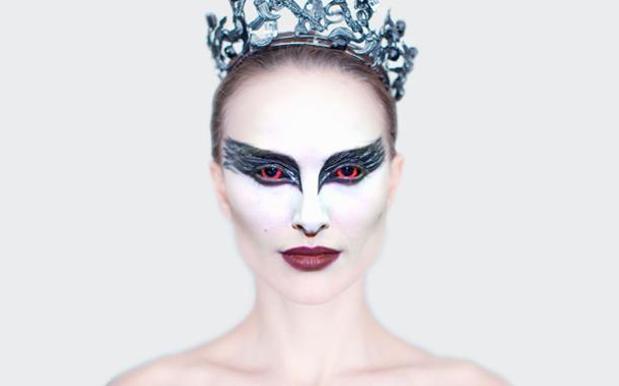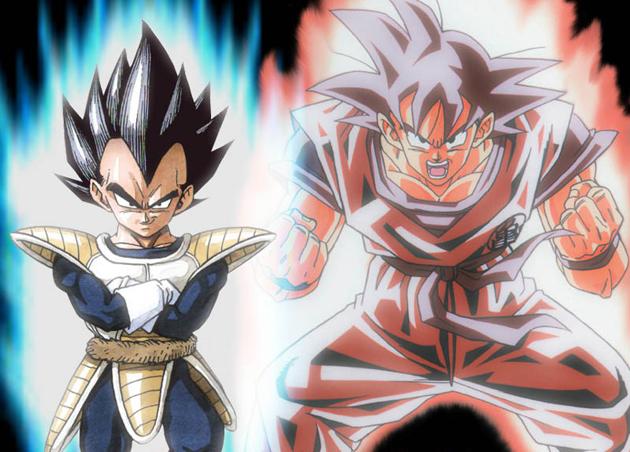
Warning: Spoilers ahead…
Thanks to Black Swan’s bleak depiction of emotional duality (black swan vs. white swan, obvs), a new game is sweeping the internet and forcing people to analyze, reduce and compartmentalize their identities! Sounds fun but how do you play? Simple. Step 1) Watch Black Swan. 2) Exercise some self awareness and psychoanalyze yourself. 3) Answer the following question: Which swan do you most identify with? Black or white? If you’ve yet to see the film (it premieres in Australia Jan 20) Natalie Portman’s Nina exemplifies the white swan – disciplined, elegant and fragile while Mila Klunis’ Lily represents the black – impulsive, sensual and mysterious. Or, as This Recording theorizes “all things can be paired up and divided into white swans and black swans. White swans have technique but black swans have essential style. The white swan is the brain, the black swan is the crotch.“. Pragmatism vs. passion in other words. The cerebral vs. the emotional. Head vs. heart. Spock vs. Kirk. Asians vs. The French maybe? I don’t know. I’m sure you get the point. You totally get the point.
It’s a timeless/universal idea and though it isn’t new or particularly shocking, its pervasiveness in popular culture is certainly worth examining. Last night I re-watched an episode of Mad Men for example, and the same sentiment lies in Don Draper’s pitch to Playtex: “Jacqueline Kennedy, Marilyn Monroe – women have feelings about these women because men do…Because we want both, they want to be both. It’s about how they want to be seen by us, their husbands, their boyfriends, their friends’ husbands. Here’s the idea, very simply: the bra comes in black and white. Jackie, Marilyn. Same incredible fit, two different women. And the beauty of it is, it’s the same woman.“
I love that line “the beauty of it is, it’s the same woman“. An acknowledgment that though one swan dominates each mind, both swans exist to some degree in everyone. Jackie vs. Marilyn. Mad Men itself offers another pairing in Betty Draper (white swan) and any of Don’s pre-divorce indiscretions (black swan), though Sally’s teacher Suzanne and Midge the pot-smoking beatnik are my favourites. Like This Recording said – head vs. crotch. Two different psychological profiles, two types of sexuality, two world views, two sets of fears, two self images, etc – the black swan/white swan dichotomy as we’ll now call it. This idea permeates almost every facet of popular and despite Darren Aronofky’s ghoulish portrayal of dueling, emotionally opposed ballerinas or Don’s freakish ability to recognize then articulate aparent human truths, this black/white trope is best explained by the highly structured world of anime. Yes, anime. That nerdy shit your cousin sacrificed ten years of human interaction and the collective bandwidth of New Zealand to consume. Here’s why. Anime was the first pop culture discipline to recognize then formalize the white/black dichotomy through a trope called red oni/blue oni. Umm…the oni what now?
As TV Tropes explains: “Differing sets of personalities are attributed to red oni and blue oni, which have often come to be the personalities of many a protagonist/antagonist combination, or that of a pair of rivals. The two are almost always forced into close contact, either voluntarily or by some outside social or legal reason such as being members of the same family, school, dojo, soldiers together in the squad, etc. Despite their wildly different personalities and philosophies the two often have either the same (or related) professions and/or skills. This of course gives them something to butt heads about, since they will also often have vastly different ways of going about whatever it is they’re competing over and each will insist that his way is the best.”
Specifically, the red oni (aka The Black Swan) ” is associated with passion, wildness, defiance and fire. A red oni character is often more brawny than brainy, enthusiastic, determined, and filled with a zest for life. He is also much more likely to break conventions and rules than his counterpart.“
While the blue oni (aka The White Swan) “is an opposite in most ways – more intellectual, proud, traditional, cultured…Blue oni personalities are often respected by others, but also likely to puzzle or confound their peers because they are difficult to read and have a mysterious quality to them…pride, aloofness, or social ineptness also means they frequently have trouble spitting it out, whatever “it” may be. It’s worth noting that while blue types appear tremendously calm and composed, sometimes this is just the surface, and scratching that facade may show that they are, if anything, wound far too tight beneath their calm and unemotional appearance.”

Some assumed knowledge here but in the case of Dragon Ball Z, Goku is the red oni and Vegeta the blue (some call this the archetypal red/blue relationship). In Naurto, Naruto is the red and Sasuke the blue. In Fullmetal Alchemist Edward is the red while Alphonse is the blue. There are literally hundreds of red/blue relationship in anime plus many more in comic books (Wolverine vs. Cyclops), film (Sith vs. Jedi) and television (Bart vs. Lisa).
It’s everywhere. Substitute “blue oni” with “Nina” and “red oni” with “Lily” and you have Black Swan’s basic plot. Nina finds it difficult to socialize with her peers, hides her emotions under a facade of aloofness and literally scratches her surface to reveal dread manifested as feathers. By contrast Lily dances with abandon, disregards rules (she introduces Nina to drugs and smokes inside) and compensates for any technical shortcomings by losing herself in the performance.
Both represent two sides of the perfect dancer and perfection, Nina’s ultimate goal, is achieved when technical skill dovetails with passion. This is embodied in Winona Ryder’s usurped principal dancer Beth who company director Thomas (Vincent Cassel) calls perfect: “Everything Beth does comes from within. From some dark impulse. I guess that’s what makes her so thrilling to watch. So dangerous. Even perfect at times, but also so damn destructive.“. Take note of that last bit. In Aronofsky’s world, the trade off for perfection is self destruction.
Look closer and the anime connection runs deeper still. Aronofsky is a huge anime fan for one. He bought the rights to cult anime film Perfect Blue in the late nineties and retooled an image of the protagonist screaming in a bath tub for a scene in Requiem For A Dream. You might remember Jennifer Connelly’s harrowing take – a scene filled with so much pathos, anger, shame and regret you could feel what was left of her soul escaping in the bubbles.
But it doesn’t end there. Aronofsky’s script draws on another well-worn anime trope called the Technician vs. Performer.
Again from TV Tropes who happen to use dance as an example: “Say two people have the same hobby. One is our heroine Alice, the other is the rival, Betty. Betty has been dancing for years. She’s highly thought of in her field, her mentors find her a dream to teach, and all the male students are desperate to be her partner. She’s up at the crack of dawn, spending hours in front of the mirror going over every single move, ironing out every tiny imperfection. She’s so devoted to her art that she probably doesn’t have much of a life outside of it – sometimes extending to issues with her own family. However, no matter what people might say about her personality or social skills, no-one can deny that her dancing is flawless. Yet she may have a love-hate relationship with her art; secretly resenting the long hours of practice…” Like the red/blue trope, the similarities should be obvious. Nina (Betty in the above scenario) trains to the point of exhaustion, prepares meticulously and dedicates all her time and energy to perfection. She is the technician.
Now to the performer…”Alice isn’t quite as capable – and that’s putting it mildly…But she loves to dance, and her joy comes out in every performance. Even if she lands flat on her tail, she leaves the audience smiling…As long as they’re competing for marks, Betty will win every time. Put the pair in front of an audience however, and it’s a different story.”
What the shit? Again, scarily accurate. Nina is the technician, Lily is the performer, and the former’s transcendent final performance – their unification. Interestingly, this relationship exists outside of fiction too. A real life sporting example would be Shaquille O’Neal (the performer) vs. Tim Duncan (the technician), premiere Western Conference big men for much of the late 90’s and early 2000’s. While the former can’t make a free throw to save his life and boasts a “quotatious” Twitter account where he performs “random acts of Shaqness”, the latter focuses on technical perfection, fundamentals and a freakishly accurate bank shot. If you wanted to win a championship you’d choose Duncan. If you wanted to sell out home games you’d choose O’Neal. Technician vs. performer, the same dichotomy exists in At The Drive In’s incendiary live performances (writhing, raw and emotive) and whatever The Mars Volta are doing these days (cerebral, masturbatory and filled with proggy elitism).
In NBA terms, Black Swan is Tim Duncan’s attempt to play like Shaq and Nina’s final performance is when you play like Michael Jordan. Technically sound but flashy. Blistering but cerebral. Perfection. Or, as TV trope explains: “Betty’s “mistake” is usually that she dances for herself and aims for perfection, while Alice dances for the audience and aims to amuse. Or is it the other way around, Alice dancing for her own joy and Betty dancing for the approval of others? Some people watching won’t realize exactly what a “perfect performance” is, but they know when the cast are enjoying themselves…and even those in the audience who do know what perfection is would rather see originality and entertainment…”
Holy shit it’s the exact same thing! Strip away the surreal window dressing and the whole film can be reduced to this exchange between Thomas and Nina…
Thomas: The truth is when I look at you all I see is the white swan. Yes you’re beautiful, fearful, and fragile. Ideal casting. But the black swan? It’s a hard fucking job to dance both.
Nina: I can dance the black swan, too.
Thomas: Really? In four years every time you dance I see you obsessed getting each and every move perfectly right but I never see you lose yourself. Ever! All that discipline for what?
Nina: [whispers] I just want to be perfect.
Thomas: What?
Nina: I want to be perfect.
Thomas: Perfection is not just about control. It’s also about letting go. Surprise yourself so you can surprise the audience. Transcendence! Very few have it in them.
Black Swan in other words, tells of a blue oni technician who transforms into a red oni performer then reconciles that change in the craziest way possible. See every anime for further examples of this (hint: it’ll be the scene where the hero faces defeat but draws on something totally cheesy like his friendships to get stronger and prevail). Specifically, Nina’s final performance is to Black Swan what turning Super Saiyan is to Dragon Ball Z. The ultimate state of being reached by training, technical perfection and some transcendent emotional spark (this will make way more sense to people who’ve seen the film). This my friends, is how anime explains the black swan/white swan dichotomy better than Black Swan itself.
So yeah, next time someone puts forward the black swan/white swan ultimatum you could be a total dick and say “Don’t you mean red or blue?”. When their smirk finally fades you can direct them to this article.



